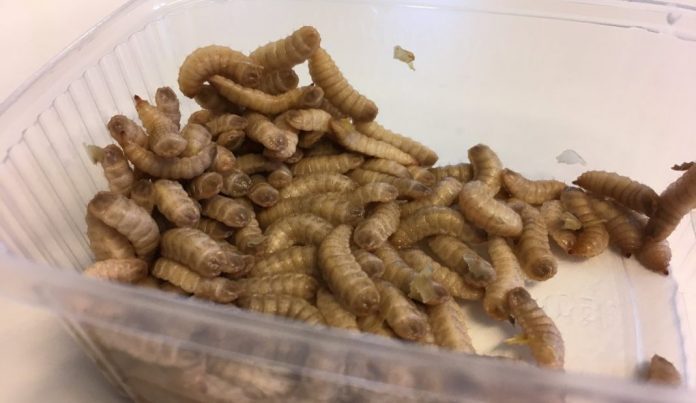Black soldier fly larvae works well as insect meal in feed for salmon. Now scientists have been testing whether they can be fed from fish farm sludge.
Black soldier fly larvae have long been in the spotlight of scientists for their nutritious value in salmon feed. They have a unique ability to convert dead organic matter, such as food waste or plants.
Now scientists have been testing whether the larvae can be fed upon sludge from land-based fish farms.
“Our experiments show that the larvae produced with sludge from fish farms become rich in marine fatty acids such as EPA and DHA, as well as minerals such as iron, zinc and selenium,” said researcher Nina Liland in a post on the website of the Institute of Marine Research.
60 per-cent
The researchers did four different feeding experiments in which chicken feed was replaced with varying amounts of sludge from fish farms. They saw that up to 60 per-cent of the feed could be replaced with sludge without integrating the growth of the larvae.
Large amounts of sludge are produced in Norwegian fish farms, and the sludge consists mainly of uneaten feed and fish feces. This is filtered out of the water in land-based facilities.
Fish farming companies are obliged to collect and dry the sludge, which in turn is burned up as waste or used in biogas facilities.
“Using sludge in insect production is a better solution if you want to take care of the valuable nutrients in the sludge,” said Liland.
“This project shows that sludge can be a useful resource, and an important contribution into the circular economy,” she added.
Need to investigate bacteria and heavy metals further
But for now, the regulations put an end to the fact that these larvae can be used as insect mealin feed for salmon or other animals. In Norway, fertilisers and sludge are not allowed as feeds for insects, as it can contain only vegetable products.
The researchers also examined levels of heavy metals in the larvae. Mercury and arsenic exceeded the permissible levels for feed ingredients set by the EU, but only in the groups that received more than 80 per-cent sludge in feed. They also did not find residues in the insect larvae of typical viruses and bacteria that can cause disease in the salmon.
But still, some optimism remains that scientists can conclude that sludge can one day be safely used as feed for larvae.
“In sludge that is dried at high temperatures, such viruses and bacteria will not be a problem, but we must further investigate whether it can be transmitted from wet sludge to the larvae. In addition, we need to analyse the larvae when they are turned into finished insect meal,” said Liland.

